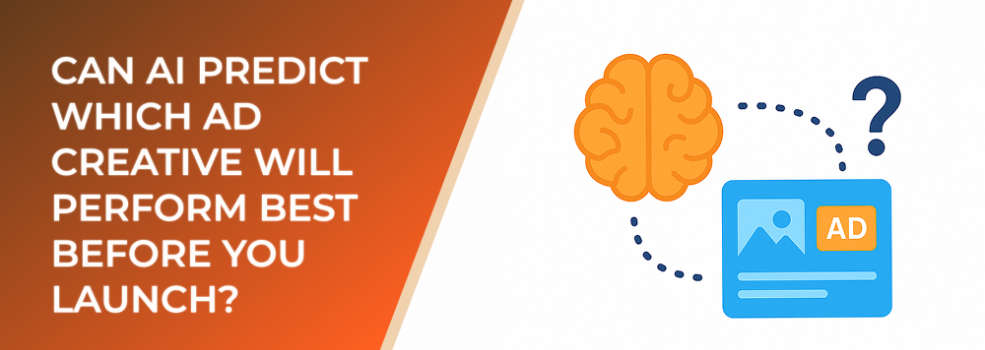AI-driven prediction tools are reshaping how brands approach creative testing. Instead of relying solely on live experiments, teams can now analyze which creative variations are more likely to perform before spending a single dollar on distribution.
These predictive systems evaluate images, layouts, motion elements, messaging patterns, and emotional cues to forecast how audiences might respond. With this data, advertisers can enter campaigns with deeper certainty and fewer costly assumptions.
Why Predictive Creative Analysis Matters
Traditional A/B testing demands time, budget, and patience. Predictive AI accelerates the process by identifying likely winners early, reducing the number of tests needed.
Industry studies indicate that pre‑launch creative scoring can reduce testing costs by up to 40 percent. Meanwhile, campaigns that use predictive scoring models report 20 to 30 percent stronger performance out of the gate.
With the ability to understand audience tendencies before launch, marketers can scale high‑potential concepts faster and eliminate low‑performing ideas earlier.
How AI Models Evaluate Creatives
1. Visual Pattern Recognition
AI systems analyze colors, contrast, symmetry, focal points, and composition to understand which creative elements draw attention or cause friction.
2. Engagement Probability Modeling
Models trained on large datasets can estimate likely click‑through rates, conversion potential, and retention impact.
3. Emotional Sentiment Analysis
AI evaluates emotional cues such as trustworthiness, excitement, clarity, or calmness based on design and expression.
4. Message Readability and Structure
Large‑scale machine learning models identify how quickly and clearly a message can be interpreted.
5. Historical Creative Similarity
The system compares new creatives with past high‑performing or low‑performing ads to forecast potential outcomes.
Benefits of Predicting Creative Performance
Predictive creative intelligence allows advertisers to:
-
Launch campaigns with higher initial confidence.
-
Shorten experimentation cycles.
-
Minimize spending on low‑impact variations.
-
Build more consistent creative frameworks.
-
Reduce subjective decision-making.
Useful Statistics to Inform Strategy

Predictive AI models can forecast high-performing ad creatives with up to 70 percent accuracy before launch
-
Pre‑launch AI scoring can reduce testing spend by up to 40 percent.
-
Campaigns using predictive analysis see 20 to 30 percent stronger early‑stage performance.
-
Creative quality influences nearly 50 percent of ad performance across digital channels.
-
Predictive creative engines can analyze thousands of variations in under 60 seconds.
When Prediction Works Best
AI-driven creative forecasting is particularly effective when brands:
-
Produce multiple creative versions per campaign.
-
Target audiences with stable interests or behaviors.
-
Use structured creative formats such as product images, testimonials, or motion graphics.
-
Run performance-driven campaigns where early results matter.
What Prediction Cannot Replace
While AI can highlight likely winners, it cannot replace:
-
Cultural intuition.
-
Brand storytelling.
-
First-hand audience insights.
-
Long-term creative experimentation.
Prediction is a strategic tool—not a creative compass. The strongest campaigns use both human understanding and automated intelligence.
Additional Reading
Here are three articles from the same publication that complement this topic:
-
How LeadEnforce Simplifies Audience Segmentation for Better Ad Results
-
The Facebook Ad Optimization Framework Every Marketer Should Use
Final Thoughts
AI can dramatically improve the efficiency and accuracy of creative testing, but it thrives when guided by human strategy and interpretation. Predicting creative performance before launch does not eliminate the need for experimentation—it simply ensures every experiment starts from a stronger position.

